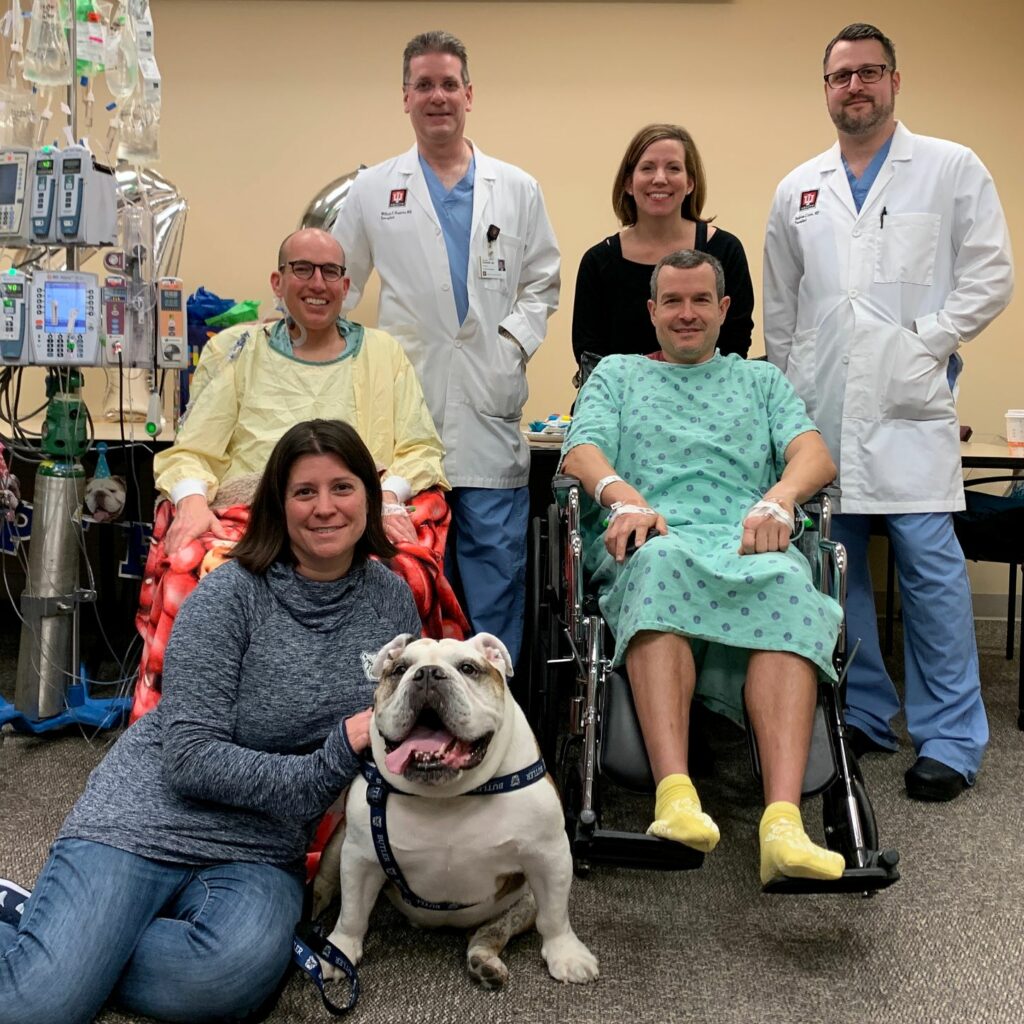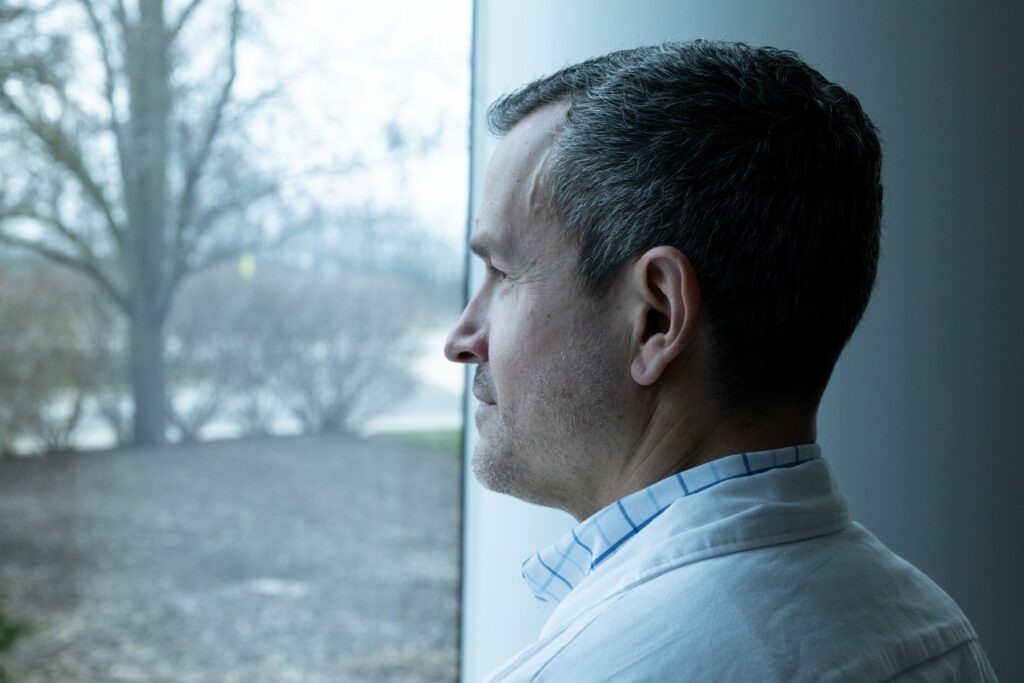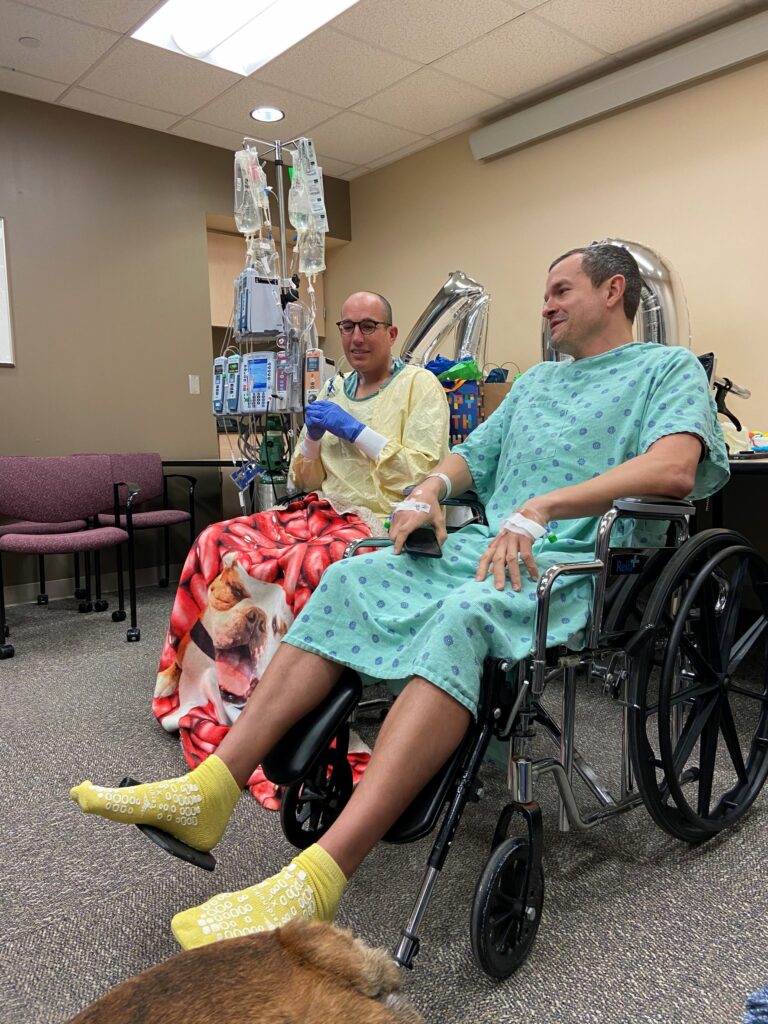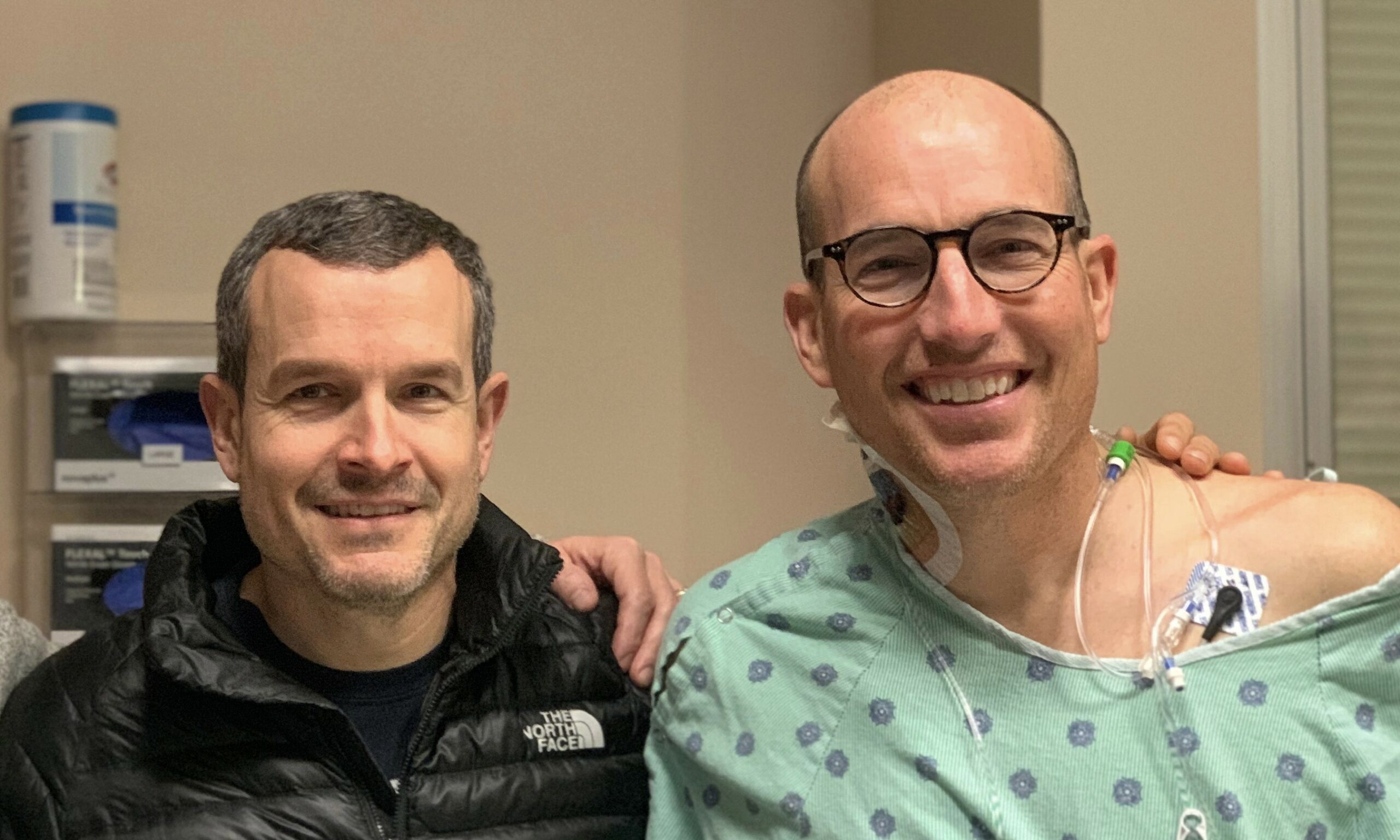Auto Development Center engineer Doug Kaltenmark didn’t hesitate when the time came to donate a kidney.
“Hey, I know that guy!”
Matt Horbaly hit pause on the TV remote and turned to his wife. They were starting season two of the Netflix documentary series Dogs, and the episode centered around Michael Kaltenmark, a handler for one of Butler University’s beloved canine mascots. The story followed how the English bulldog was entering retirement just as Michael was facing a risky kidney transplant.
Horbaly didn’t think the episode, “Much Ado About Blue,” had anything to do with Honda—until fellow Honda engineer Doug Kaltenmark showed up in a hospital gown halfway through the show as the life-saving kidney donor for his younger brother Michael.

At the office
Horbaly is a materials engineer at the North American Auto Development Center (ADC) in Ohio, where he works with Doug Kaltenmark, a design engineer with 25 years of Honda experience.
“Doug (Kaltenmark) is very clear, very direct. Working with him, you get a plan and a path forward,” Horbaly shared.
He recalled an issue with a washer tank on the 2021 Acura TLX that had Kaltenmark and his team working in the Materials Test Lab for hours.
“Doug was in the trenches until the final hour,” Horbaly said. “It was no surprise that they got it done right.”
Through his work, people knew Kaltenmark was selfless. But that attribute reached a whole new level when he decided to give a part of himself—literally—to someone else.

More than an idea
“The Honda Philosophy has motivated me and kept me here,” Kaltenmark said. “It aligns with my own philosophy in life. It’s how you live life that matters, and that’s the foundation for me, working here.”
Kaltenmark grew up one of three boys. When he was visiting with family in 2019, they brought up that his brother Michael was going to need a kidney transplant.
Kaltenmark didn’t hesitate. “Tell me what I gotta do,” he said, and he called right away to be tested for consideration as a donor.
Kidney donation not only requires the donor to be a match for blood type and antibodies—but also the ability to live a healthy life with only one kidney.
The consideration process involved a lot of testing, including comprehensive medical tests, chest scans, X-rays, and a thorough review of Kaltenmark’s kidney system. It also required him to make a few trips to Indianapolis, where his brother would be having the transplant surgery.
According to the American Kidney Fund, almost 100,000 people are on the waiting list to receive a kidney transplant, which is higher than those waiting for all other organs combined.
The kidney donor surgery is usually done laparoscopically, with an incision just big enough to fit the kidney through. It takes around two to three hours, with the donor spending one to three days recovering in the hospital.

Actions speak louder
“I didn’t have to do too much,” Kaltenmark explained. “The surgeon and nurses—the whole medical team—did the hard work.”
For Kaltenmark, it was the days following the surgery that were the worst. “I like to be active,” he said, admitting that just sitting around for three weeks was very challenging.
But it was worth it: “My brother had his life back after the surgery. His kids got their dad back. It was very powerful,” he said.
For Kaltenmark, there are significant parallels between his professional and personal approaches.
He partially credits Japanese mentors from his early days at Honda: “At first, you might feel overwhelmed,” he said, reflecting on projects and expectations.
But the engineering mindset is to make a path and a plan forward and then make it happen. Or, as his mentors said, “You’re a lucky engineer. You have an opportunity to make an impact.”
On the days when he’s at ADC, Kaltenmark has always been inspired by the large Mr. Honda quote that’s placed high on the wall between the two exits from the development floor: “Helping people is the most important thing of all.”
Kaltenmark said it sticks with him.
“It’s probably my favorite Mr. Honda quote,” he said, noting it’s part of a longer quote from a message Mr. Honda gave to associates in 1960:
“Helping people is the most important thing of all. Really helping. Doing something for people. Truly pleasing them. When you see that the other person is truly pleased, that makes you happy. That’s real happiness.“
“It’s about helping people,” Kaltenmark continued, and he’s not just referring to his kidney donation. “The little things add up. Take the opportunity to reach out.”
Kaltenmark was surprised at how easy, in fact, kidney donation was.
“It was a once-in-a-lifetime opportunity,” he said, and one that he encourages others to consider. “I want people to think twice and consider it.”
You never know how you could give someone their life back.
For Horbaly, the Netflix episode was a human connection with one of his Honda colleagues, and one that solidified what he felt, that “who you are at home is who you are at work.”

